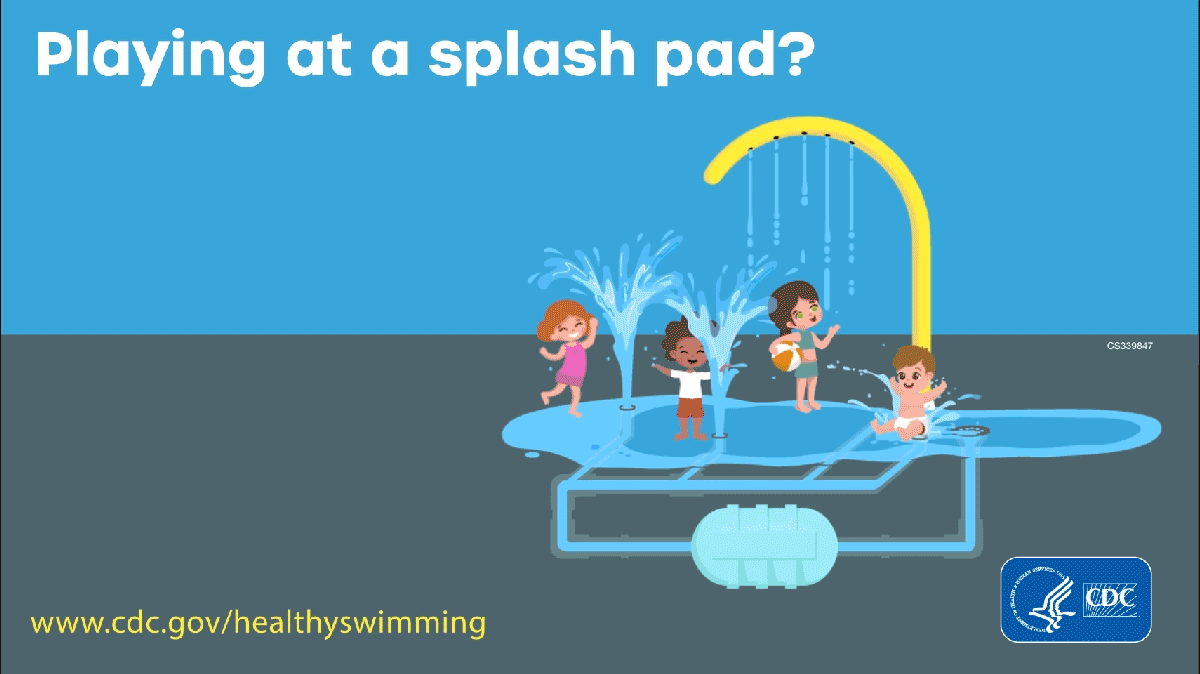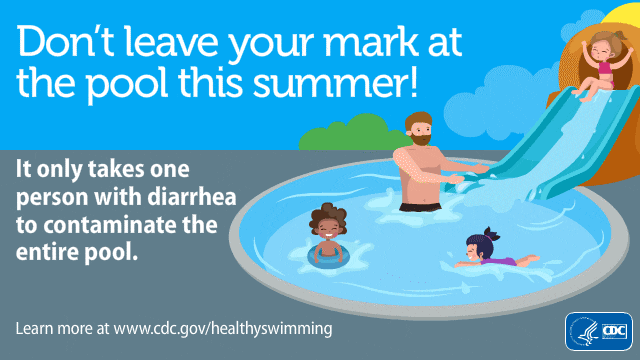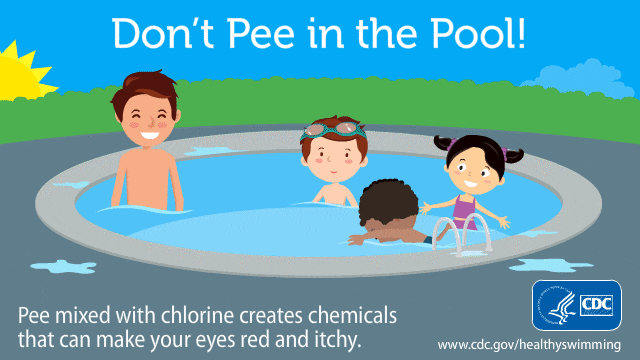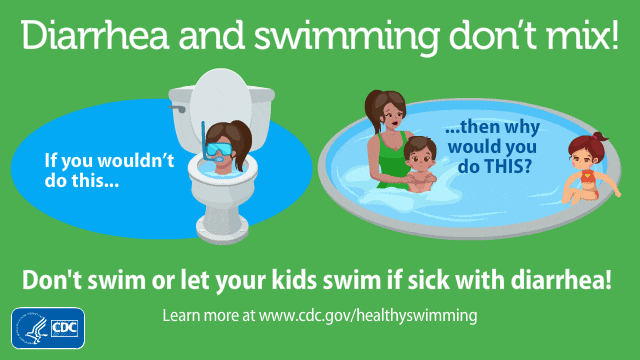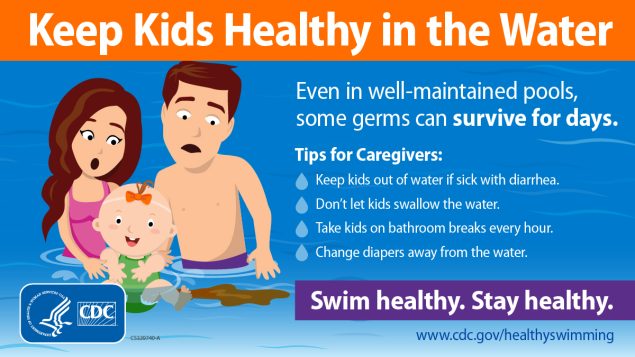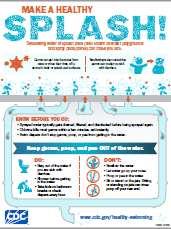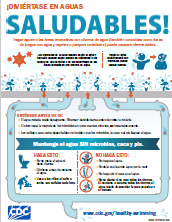Purpose
The information and materials below can help public health professionals promote healthy and safe swimming messages on social media, websites, and other communication channels during Healthy and Safe Swimming Week and throughout the year. These resources can be used to raise awareness about the steps everyone can take to protect themselves and others from illness and injury in and around the water.
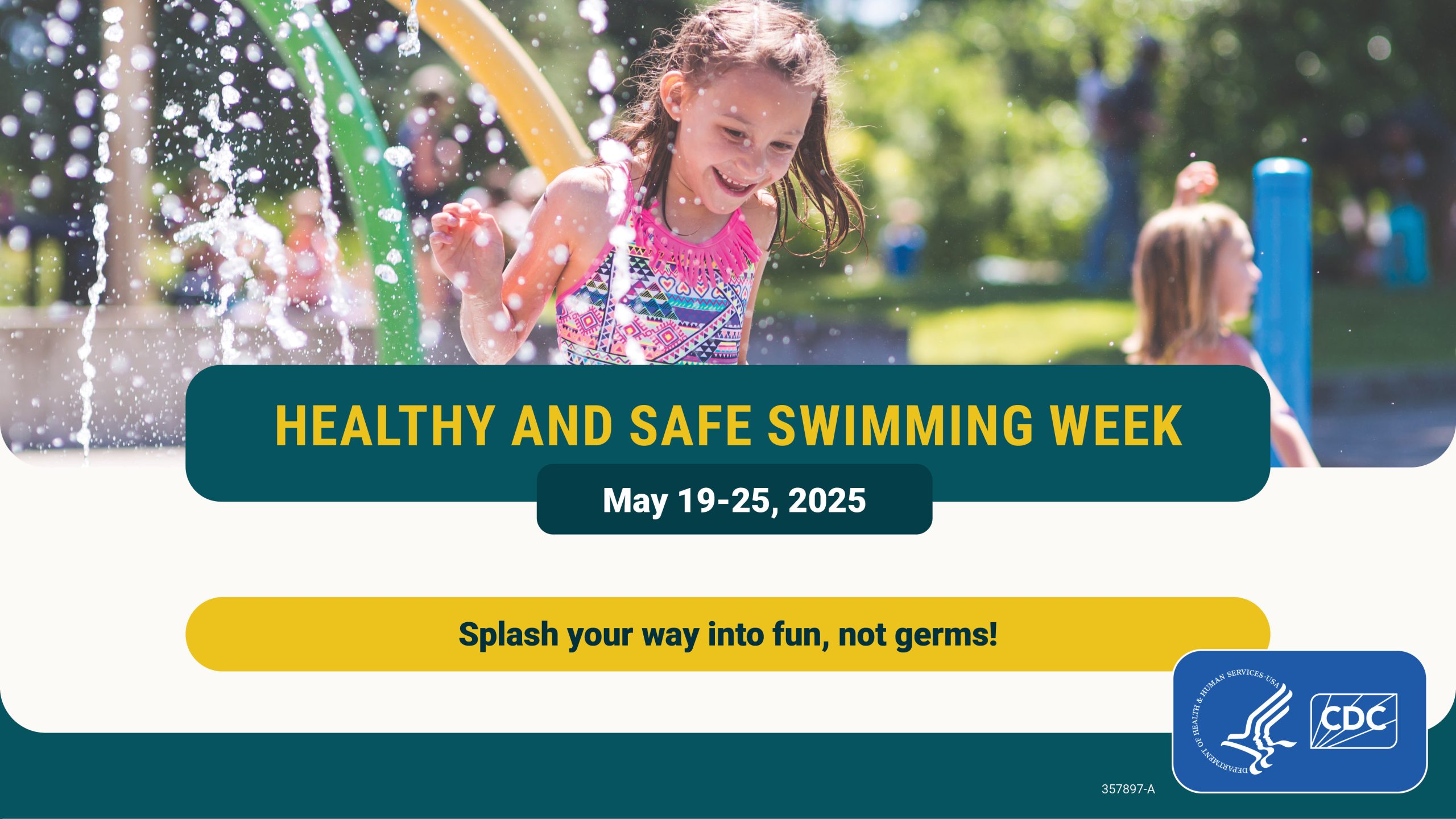
Reach out to partners
All audiences
- Post web content related to splash pads on your organization's website.
- Disseminate healthy and safe swimming messages and materials (for example, in email announcements).
- Post messages on your organization's social media channels using the "Post on social media" content below.
Media
- Share information on steps swimmers and caregivers can take to prevent splash pad-related illnesses, drowning, other swimming-related illnesses, and pool chemical injuries.
Operators of treated aquatic venues (pools, hot tubs, and splash pads)
- Check out CDC's Model Aquatic Health Code and explore how it can be used to prevent illness and injury in and around aquatic venues.
- Explore forms, protocols, and other resources on our MAHC Tools and Training page.
- Share CDC's latest guidance on the proper operation and management of pools, hot tubs, and splash pads.
Beach managers and operators of untreated aquatic venues
- Recommend that beach managers:
- Check out EPA's online technical resources.
- Sign up for the Great Lakes Commission email group—known as Beachnet—to communicate and network with other beach managers across the country.
- Establish policies that allow employees to perform alternate duties that do not require entering the water if they have diarrhea or an open cut or wound that cannot be completely covered by a waterproof bandage.
- Check out EPA's online technical resources.
Pool supply stores
- Recommend that retailers share information on pool chemical safety online and in their stores.
Healthcare providers
- Encourage providers to share healthy and safe swimming messages with their patients.
- Engage your local chapter of the American Academy of Pediatrics or other organizations for healthcare professionals.
- Engage your local chapter of the American Academy of Pediatrics or other organizations for healthcare professionals.
Community leaders
- Create fact sheets for community leaders (such as program administrators, boards of health, and elected officials) detailing specifics about your agency's Healthy and Safe Swimming Week efforts.
Post on social media
Use these suggested posts to spread the word about healthy and safe swimming on your social media platforms.
Splash pads
- Swallowing even a small amount of water contaminated with certain germs can make you sick with diarrhea for up to 3 weeks. Learn easy ways to keep kids healthy at splash pads.
- Going to the splash pad with your kids? Take breaks every hour to use the bathroom or check diapers.
- Tell kids not to sit on jets, which can rinse and spread germs off rear ends.
- Don’t take your child to the splash pad if they are sick with diarrhea. If someone swallows even a small amount of water contaminated with diarrhea-causing germs, they can get sick for weeks.
- Chlorine doesn’t kill germs instantly. It can take minutes to days to kill certain diarrhea-causing germs.
Drowning
- Watch kids closely when they are in or around water. Drowning happens quickly and quietly, so avoid distracting activities like being on a phone.
- More children ages 1–4 years die from drowning than any other cause. Learn what you can do to help protect children from drowning.
- Help prevent children from getting in your backyard pool unsupervised. Install four-sided fencing which fully encloses the pool and separates it from the house, with self-closing and self-latching gates.
- Help keep swimmers safe. Know how to recognize and respond to a swimmer in distress and how to perform CPR.
- Teach children basic swimming and water safety skills. Swimming lessons can reduce the risk of drowning. Children who have had swimming lessons still need close and constant supervision when in or around water.
Other swimming-related illnesses
- Follow CDC's steps for healthy swimming to protect yourself and those you care about from illness at the pool and beach this summer.
- Pee in the toilet, not in the pool! When pee and chlorine mix in the pool, there is less chlorine available to kill germs.
- #DYK that chlorine doesn't kill germs in pools right away? While it kills most germs within minutes, some germs can live in a properly chlorinated pool for days! Protect yourself. Don't swallow water you swim or play in.
- Sweat and dirt on your body can use up chlorine needed to kill germs in the pool. Showering before you get in the pool keeps chlorine levels up to help keep you and those you care about healthy!
- Going for a swim with kids? Take a break every hour to use the bathroom or check diapers. Change diapers away from the water to help keep germs from getting in.
- Don't swallow splash pad water. Did you know that it can take chlorine minutes—and sometimes even days—to kill germs in splash pad water? Swallowing water with germs can cause diarrhea or vomiting.
Diarrhea and swimming
- Diarrhea and swimming don't mix! Follow CDC's steps for healthy swimming to help protect yourself and those you care about from illness at the pool.
- Did you know swallowing even a small amount of water contaminated with diarrhea germs can make you sick for up to 3 weeks? Don't swallow water at the pool or splash pad!
- Don't swim or let your kids swim if they are sick with diarrhea. One person with diarrhea can contaminate the entire pool and make others sick for up to 3 weeks.
- Stay out of splash pads if you are sick with diarrhea. Jets can rinse germs found in poop off butts and swallowing the water with those germs can make you sick. Chlorine doesn't kill germs instantly.
Pool chemical safety
- Using your backyard pool? Pool chemicals protect us from germs but can cause injuries if not handled safely. Check out CDC's website for pool chemical safety tips.
- Using your backyard pool this summer? Help protect kids and pets by keeping pool chemicals out of reach.
- Backyard pool owners: Make sure you know how to safely use pool chemicals to help keep everyone safe and healthy this summer.
- Backyard pool owners: Learn how to safely use pool chemicals and help protect yourself, kids, and pets from injury.
Vibrio infection
- Stay safe this summer! Vibrio bacteria live in the ocean and can get into skin through cuts or open wounds. If a wound gets worse after swimming in salty or brackish water, seek medical attention.
- This summer, swim safely. Cover any wounds with a waterproof bandage before swimming or wading in brackish or salt water.
Graphics
